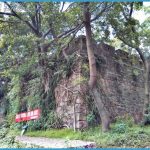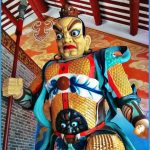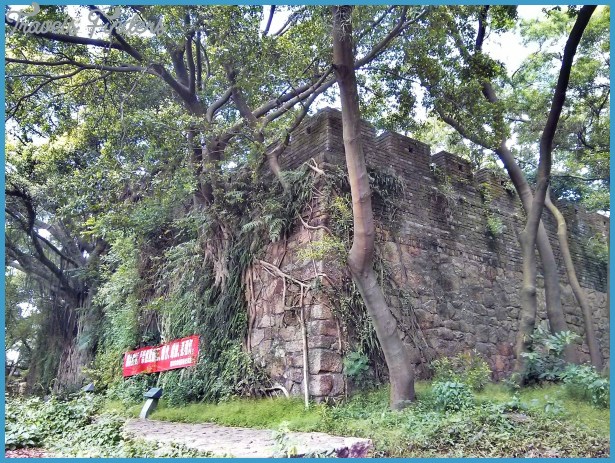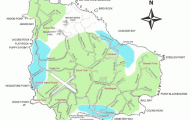Tian Hou or Queen of Heaven, better known by her Cantonese name Tin Hau, is a female Daoist deity worshipped by seafarers and their families all around the coast of southern China. She has various manifestations. On the Fujian coast and especially in Taiwan she is known as Ma Tsu and she fades imperceptibly into Amida Buddha or Guan Yin all around the area. It is probably no accident that southern Chinese Christians are devoted to the veneration of Mary in the form of Star of the Sea.
Tin Hau temples aren’t usually very impressive, but this is the biggest most elaborate Tin Hau temple that we have ever seen.
There has been a Tin Hau Temple on this site since the 11th century. However events in the 15th century raised the profile of the temple and led to it becoming the large institution that we see today.
In 1405 the eunuch Admiral, Zheng He was setting out on his voyages of discovery in South-East Asia and West Africa. At the mouth of the Pearl River, close to Nan Shan, he ran into serious difficulties. Being a seafarer, he prayed to Tin Hau. She appeared to him and he was saved. On his return to the court, he reported this to the Emperor who ordered that the Nan Shan Tin Hau Temple be renovated and enlarged.
Many of the aspects of the restoration show the influence of the Ming imperial architectural style, albeit in the southern style with its characteristic upturned eaves. The drum and bell towers reflect those in Beijing they are amongst the oldest Beijing buildings dating back to the Yuan dynasty, 12th 14th centuries.
Restoration of the temple began in 1992 and was completed in 1995. As well as the original temple buildings a Tin Hau Museum was constructed. This involves a small but well put together display of the history of the area and its folk customs. There is also a museum of Chinese painting and calligraphy and a Forest of Steles, a collection of calligraphy of notable people carved into granite.
There’s not a lot of the original temple incorporated into the rebuild. The floors and walls are said to be original. But remember that this is true of most historical sites in China after the destruction of the Cultural Revolution. The restoration is faithful and authentic.
One thing, which we should mention, is the environment of Chiwan. One reason why the Tin Hau Temple and the Song Shao Di Tombs were built here was the excellent feng shui of the area. Mountains behind, a plain in front to the south which could hold a thousand horses and then the sea; nothing could be better. During the Ming 14th to 17th centuries and Qing 17th to 20th centuries Dynasties, Chiwan was always included amongst the Eight Great Views of Xin’an County. Even when we first came to Chiwan 20 years ago it was a beautiful place.
But since then one of the world’s biggest container ports has been built in front of Chiwan and the mountain has suffered very heavy quarrying. In recent times a lot of remediation work has been done and the trees are growing well. They still haven’t reached the stage where they fully hide the terraces of the quarrying but they’re getting there. There is a lot of discussion about the use of eucalyptus rather than native oak and similar trees in the reforestation. Many people, including a party in the government and a large part of the press, feel that this is storing up problems for the future. But in the meantime eucalyptus grows quickly and covers up a multitude of sins.
Address: Chiwan Sixth Rd, Chiwan, Nanshan
Open between 8 am and 5; 30 pm
Metro: Chiwan on the Shekou line
Buses Nos. 226 and 355. Bus stop is Tian Hou Gong
Entry is $15














